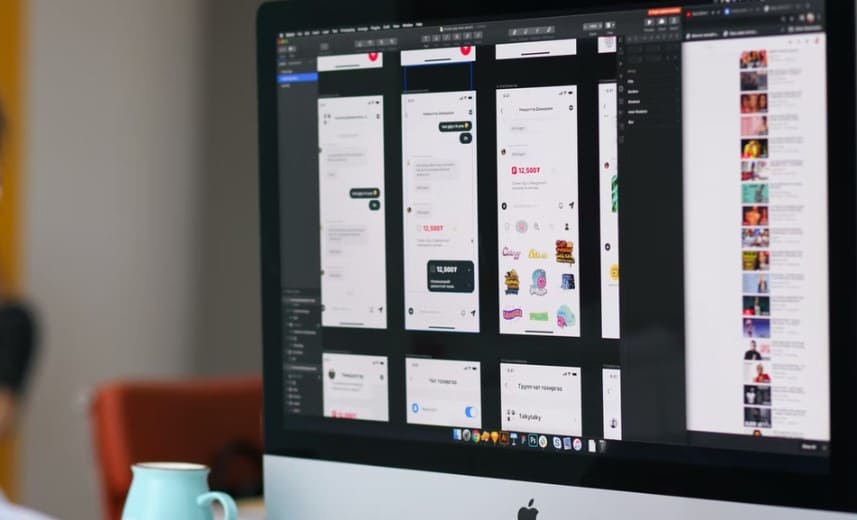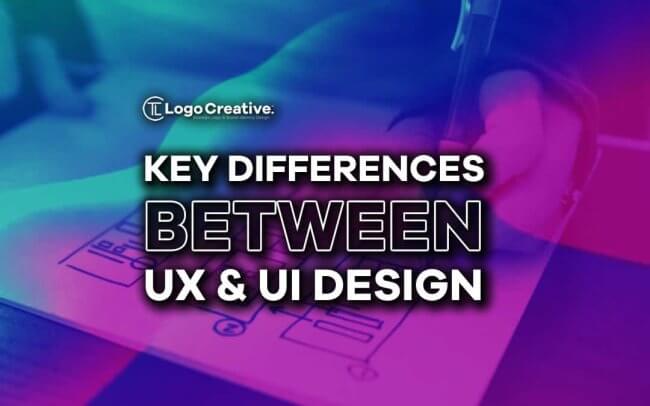In this article we look at the Key differences between UX and UI Design.
The digital field is an arena with many inventions and innovations. Everything developed or designed has its source, which gives its alluring reference. When designing a product, you won’t miss encountering some standard terms like User Experience (UX) and User Interface (UI) design. UX and UI are the drivers of developing appealing and welcoming interfaces to the human experience.
Therefore, UX and UI work concurrently by performing different functions for the common goal of increasing the productivity and human experience in a product.
The ultimate goal is to optimize a product for interactive, enjoyable, and effective use by an individual. A product user will then feel the conscious experience, accomplishing their tasks seamlessly.
Table of Contents
What are the Differences Between UX & UI?

User experience design (UX) is an interactive process of creating products that give users meaningful and relevant experiences. A cognitive scientist called Don Norman coined the term user experience in the 1990s. So, the interactive approach of the product and services go in handy with the end-users.
UX design services do not focus on visuals but on the overall felt experience. On the other side, User interface design (UI) is the appropriate process where designers build software interfaces and functions to improve their style and look. A UI designer majorly thinks about typography, color schemes, imagery, and icons &buttons.
It is essential to discuss their significant differences to understand UX and UI design. Let’s delve into their differences for an elaborate and clear understanding.
UX Design Integrates Interfaces to be Helpful, While UI Design Makes the Interfaces Beautiful.
A helpful product meets the need not bridged in the market. UX design research process encompasses developing personas, engaging in competitive analysis, and developing a valuable product for customers.
The method of developing a useful product is validated by testing the life cycle of a product. After wireframes and user flows are tested and prototyped, the UI designer takes the role of making aesthetics pleasing.
This involves deciding on the typography and color schemes that will be simple and attractive. Nevertheless, interactions, color choices, and typography are not based on UI designer preferences but taking into consideration of personas’ specific reasons.
UI designers use a visual hierarchy to guide users for them to do what is required at a specific time, thereby meeting set objectives.
UX is Applied Across Products, Services, and Interfaces, While UI is Used in Interfaces.
User experience design is a famous field gaining much reputation daily. Currently, companies having websites with those that develop products and provide essential services are keenly looking at what users want before building the interfaces.
The approach integrates all fields, either development, services, or interfaces, without majoring in one. User interface design applies only to the user interface. However, it is not limited to graphical user interfaces of tablets, mobile devices, and computers.
Nowadays, there are many interfaces for watches, vending machines, car dashboards, and washing machines. So, when designing either for experience or interface, you should keep users’ hearts in the design process.
UX Enables the User to Accomplish Goals While UI Opens up Emotional Connections.
People visit websites to check on information and all kinds of stuff. They can do it for fun or with a goal in mind. UX design is a great approach where users can be helped to meet and, in the long run, accomplish their goals with ease in an interactive manner.
Designers for UX want to provide value in any assistance they give out, whether on testing or prototyping. UI design integrates the personality of your real interface to customers so that they can elicit the desired loyalty.
Therefore, people can be drawn to your site due to the appealing and striking design when they are doing their stuff. Also, when they place a personal connection like contacting, the individual is hooked up, which will make your interface appreciated. Emotional connection opens up the broader spectrum of avoiding your past shortcomings to a part of positive vibes.
UX Design is the First Step of Building a Product, While UI Design is Done After but Not at all Times.
UX and UI are processes of design that work together. Ordinarily, UX design is a step done first when building an application or a product. The UX designers do most of the research that will initialize the validation and invalidation process to be a guiding sphere in developing a product.
Afterward, when the prototype has passed numerous levels and is on the scope of finalization UI designer takes the mantle by working on micro-interactions and visual design aspects.
Conversely, the process cannot always be linear but will depend on key factors like; individuals being given the responsibility to handle UX & UI or whether the teams working on a project are the same or different.
UX Takes the Overall Aspect of the User Experience, While UI Looks at Product Function and interfaces.
UX design is a best-suited process that considers the general feel of the experience. This means that UX designer considers the overall journey of solving a specific issue by integrating steps, tasks, and even the optimized expertise of users.
The process maps out the basic layouts in the journey by considering the information architecture. Wireframes are the essential blueprints that organize the structure of the sites.
UI aligns its work in ensuring the interfaces and functions of the developed applications or software meet the safety standards and reputable structure. With this, UI improvises the style and look of the designed application.
Conclusion
UX and UI are excellent design components that work concurrently. They use the best prototyping tools to scale up how your app or website functions for a fantastic responsive layout. Even though they function differently, they serve a common purpose of providing a good interface with ultimate optimization of the user’s experience. Check out The Top UI Design Trends You Should Know In 2022
Join The Logo Community
We hope this article has helped with understanding the Key differences between UX and UI Design. If you would like more personal tips, advice, insights, and access to our community threads and other goodies, join me in our community.
You can comment directly on the posts and have a discussion with Andrew, the Founder of The Logo Creative.
*TIP – We recommend Skillshare to learn online. There are tons of classes for everything including graphic design, web design, marketing, branding and business-related courses. Get a free trial with our link and you won’t regret it Trust us!



